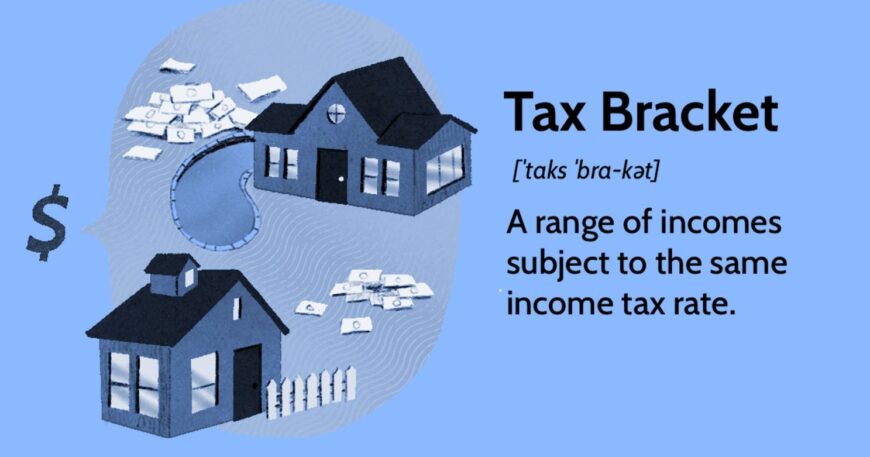Navigating the world of taxes can be daunting, especially when understanding tax brackets. We will delve into the specifics of tax brackets for 2023 and 2024, focusing on federal and income tax brackets. Syed Professional Services has created this guide to help you comprehend how tax brackets operate and how they affect your finances.
What Are Tax Brackets?
Tax brackets are the divisions at which tax rates change in a progressive tax system. Essentially, they determine the rate at which an individual or corporation is taxed based on their income level. The tax system is designed to ensure that those who earn more pay a higher percentage of their income in taxes than those who earn less.
Federal Tax Brackets for 2023
For the tax year 2023, the federal tax brackets are structured as follows:
- 10% Bracket:. This bracket applies to incomes up to $10,275 for single filers and $20,550 for married couples filing jointly.
- 12% Bracket:. This bracket applies to incomes over $10,275 up to $41,775 for single filers and $20,550 to $83,550 for married couples filing jointly.
- 22% Bracket:. Applies to incomes over $41,775 up to $89,075 for single filers and $83,550 to $178,150 for married couples filing jointly.
- 24% Bracket:. This bracket applies to incomes over $89,075 up to $170,050 for single filers and $178,150 to $340,100 for married couples filing jointly.
- 32% Bracket:. This bracket applies to incomes over $170,050 up to $215,950 for single filers and $340,100 to $431,900 for married couples filing jointly.
- 35% Bracket:. Applies to incomes over $215,950 up to $539,900 for single filers and $431,900 to $647,850 for married couples filing jointly.
- 37% Bracket:. This bracket applies to incomes over $539,900 for single filers and over $647,850 for married couples filing jointly.
Federal Tax Brackets for 2024
The federal tax brackets for the year 2024 are expected to see some adjustments due to inflation and other economic factors. Here is a tentative outline based on projected figures:
- 10% Bracket: This bracket applies to incomes up to $11,000 for single filers and $22,000 for married couples filing jointly.
- 12% Bracket: This bracket applies to incomes over $11,000 up to $44,000 for single filers and $22,000 to $88,000 for married couples filing jointly.
- 22% Bracket: This bracket applies to incomes over $44,000 up to $92,000 for single filers and $88,000 to $184,000 for married couples filing jointly.
- 24% Bracket: This bracket applies to incomes over $92,000 up to $174,000 for single filers and $184,000 to $348,000 for married couples filing jointly.
- 32% Bracket: This bracket applies to incomes over $174,000 up to $222,000 for single filers and $348,000 to $444,000 for married couples filing jointly.
- 35% Bracket: This bracket applies to incomes over $222,000 up to $555,000 for single filers and $444,000 to $666,000 for married couples filing jointly.
- 37% Bracket: This bracket applies to incomes over $555,000 for single filers and over $666,000 for married couples filing jointly.
Income Tax Brackets: Understanding the Impact
“Understanding income tax brackets is important for calculating your tax liability. It is important to understand that when you move into a higher tax bracket, only the portion of your income that is over the threshold is subject to tax. Here’s an example to help you understand this:
If you are a single filer with an income of $50,000 in 2023, your tax liability is calculated as follows:
- 10% on the first $10,275
- 12% on the amount over $10,275 up to $41,775
- 22% on the amount over $41,775 up to $50,000
This progressive system ensures that taxpayers benefit from lower tax rates on lower portions of their income.
Planning for Future Tax Changes
Staying informed about tax bracket changes is essential for effective financial planning. Adjustments to tax brackets can impact your take-home pay, retirement planning, and overall financial strategy. Here are a few tips to help you navigate these changes:
- Review Your Withholding: Ensure your employer withholds the correct taxes from your paycheck. Adjusting your withholding can help prevent surprises at tax time.
- Maximize Tax-Advantaged Accounts: Retaining retirement accounts like a 401(k) or IRA can reduce your taxable income.
- Stay Informed: Keep up-to-date with tax law changes. The IRS typically releases updated tax brackets each year, reflecting inflation and other economic factors.
Conclusion
Understanding tax brackets is fundamental to managing your finances and minimizing tax liability. Staying informed will help you make better financial decisions as tax laws evolve. At Syed Professional Services, we are committed to helping you navigate the complexities of the tax system. Whether you need assistance with tax preparation, planning, or advice on optimizing your tax situation, our team of experts is here to help.
Stay proactive and informed to maximize your financial future. Contact Syed Professional Services today for more information and personalized assistance.




